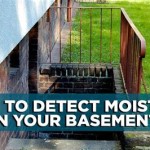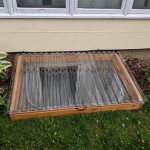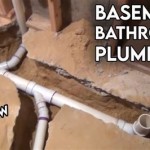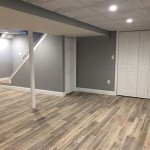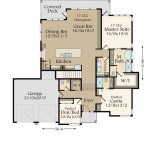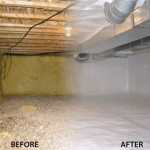How To Fix Cement Block Basement Walls
Cement block basement walls, also known as concrete masonry unit (CMU) walls, are a common construction method in residential buildings. While durable, these walls are susceptible to various issues over time, including cracking, water damage, efflorescence, and bowing. Addressing these problems promptly and effectively is crucial to maintaining the structural integrity of the foundation and preventing further deterioration. This article provides a comprehensive guide on how to diagnose and repair common problems associated with cement block basement walls.
Identifying Common Problems with Cement Block Basement Walls
Before embarking on any repair work, a thorough inspection of the basement walls is necessary. This inspection should focus on identifying the type and extent of the damage. Common issues include:
Cracks: Cracks are one of the most frequent problems encountered in cement block walls. They can range from hairline cracks to significant fractures that compromise the structural integrity. Cracks are generally categorized as:
Hairline Cracks: These are very thin cracks, typically less than 1/8 inch wide. They are often caused by minor settling or shrinkage of the concrete.
Vertical Cracks: These cracks run vertically along the wall and may indicate settling or soil pressure issues.
Horizontal Cracks: Horizontal cracks are often a sign of serious structural problems, such as excessive soil pressure pushing inward on the wall. These require immediate attention.
Stair-Step Cracks: These cracks follow the mortar joints in a step-like pattern. They are often caused by differential settling.
Water Damage: Basements are prone to moisture intrusion, which can damage cement block walls. Signs of water damage include:
Water Stains: Dark stains on the wall indicate areas where water has penetrated.
Mold and Mildew: These organisms thrive in damp environments and can cause health problems and further damage to the wall.
Efflorescence: A white, powdery deposit on the wall's surface is efflorescence, a salt deposit left behind by evaporating water. While efflorescence itself is not structurally damaging, it indicates the presence of moisture within the wall.
Bowing: Bowing occurs when the wall curves inward, usually due to excessive soil pressure against the exterior. This is a serious structural issue that requires immediate professional evaluation.
Spalling: Spalling refers to the surface of the concrete blocks flaking or crumbling away. This is usually caused by water penetration followed by freeze-thaw cycles.
Mortar Deterioration: The mortar joints between the blocks can deteriorate over time due to weathering and moisture exposure. This can weaken the wall and allow water to penetrate.
Repairing Cracks in Cement Block Walls
The repair method for cracks depends on their size, type, and cause. Proper repair is essential to prevent water intrusion and maintain structural integrity.
Hairline Cracks: Minor hairline cracks can be sealed with a concrete crack sealant. The process involves:
Cleaning the Crack: Use a wire brush to remove any loose debris or dirt from the crack.
Applying Sealant: Apply a flexible concrete crack sealant using a caulking gun, ensuring the sealant completely fills the crack.
Smoothing the Sealant: Use a putty knife to smooth the sealant and create a flush finish.
Non-Structural Cracks (Up to 1/4 inch): These cracks can be repaired using epoxy injection or hydraulic cement.
Epoxy Injection: This method is ideal for sealing cracks and restoring the structural integrity of the block. The process involves:
Cleaning the Crack: Thoroughly clean the crack using a wire brush and vacuum.
Installing Injection Ports: Install injection ports along the crack at regular intervals, typically every few inches.
Sealing the Crack Surface: Seal the surface of the crack between the injection ports with epoxy paste to prevent the epoxy from leaking out.
Injecting Epoxy: Inject the epoxy resin into the ports, starting from the lowest port and working upwards, until the epoxy begins to emerge from the adjacent port.
Removing Ports and Excess Epoxy: After the epoxy has cured, remove the injection ports and scrape away any excess epoxy paste.
Hydraulic Cement: This material expands as it hardens, creating a watertight seal. The process involves:
Widening the Crack: Use a chisel and hammer to widen the crack slightly, creating a V-shaped groove.
Cleaning the Crack: Thoroughly clean the crack to remove any loose debris.
Mixing Hydraulic Cement: Mix the hydraulic cement according to the manufacturer's instructions.
Applying Hydraulic Cement: Apply the hydraulic cement to the crack, pressing it firmly into the groove.
Smoothing the Surface: Smooth the surface with a trowel or putty knife.
Structural Cracks (Horizontal or Wide Cracks): These cracks indicate significant structural problems and require professional evaluation. Repair options may include:
Wall Anchors: These anchors are installed to stabilize the wall and prevent further movement. They consist of steel plates placed on the interior and exterior of the wall, connected by a threaded rod that is tightened to pull the wall back into position.
Carbon Fiber Reinforcement: Carbon fiber straps are applied to the wall to provide additional strength and prevent further cracking. This method is less invasive than wall anchors but may not be suitable for severely damaged walls.
Underpinning: This involves strengthening the foundation by extending it deeper into the ground. This is a more extensive and costly repair but may be necessary for severely damaged foundations.
Addressing Water Damage and Moisture Issues
Preventing water intrusion is essential for maintaining the integrity of cement block basement walls. Addressing the source of moisture is crucial before attempting any repairs.
Identifying the Source of Moisture: Common sources of basement moisture include:
Poor Drainage: Improperly graded soil, clogged gutters, and inadequate downspout extensions can cause water to accumulate around the foundation.
Leaking Pipes: Leaks in plumbing pipes within the basement or behind the walls can contribute to moisture problems.
Condensation: Condensation can occur on cold basement walls, especially during humid weather.
Groundwater: High water tables or inadequate foundation drainage systems can allow groundwater to seep into the basement.
Remediation Techniques: Addressing the source of moisture involves the following steps:
Improving Drainage: Ensure that the soil slopes away from the foundation and that gutters and downspouts are functioning correctly. Extend downspouts at least 10 feet away from the foundation.
Repairing Leaks: Repair any leaking pipes or plumbing fixtures.
Improving Ventilation: Increase ventilation in the basement to reduce humidity and condensation. Consider installing a dehumidifier.
Waterproofing: Apply a waterproof coating to the interior or exterior of the basement walls. Interior waterproofing involves applying a waterproof paint or sealant to the walls. Exterior waterproofing involves excavating around the foundation and applying a waterproof membrane to the exterior walls. This is a more extensive and costly repair but provides the best protection against water intrusion.
Removing Efflorescence: Efflorescence can be removed using a wire brush and a solution of water and muriatic acid. Exercise caution when using muriatic acid and follow the manufacturer's instructions carefully. Wear appropriate personal protective equipment, including gloves, eye protection, and a respirator.
Addressing Mold and Mildew: Mold and mildew can be removed using a solution of bleach and water. Mix one part bleach with ten parts water and apply the solution to the affected areas. Allow the solution to sit for several minutes, then scrub the area with a brush and rinse with clean water. Ensure adequate ventilation during and after cleaning.
Repairing Mortar Joints and Spalling
Deteriorated mortar joints and spalling can compromise the structural integrity of the wall and allow water to penetrate. Repairing these issues involves:
Repointing Mortar Joints: Repointing involves removing the damaged mortar and replacing it with new mortar. The process involves:
Removing Old Mortar: Use a chisel and hammer or a power tool with a mortar-raking bit to remove the old, deteriorated mortar to a depth of about 1 inch.
Cleaning the Joints: Thoroughly clean the joints using a brush and vacuum to remove any debris.
Dampening the Joints: Dampen the joints with water to improve the adhesion of the new mortar.
Mixing Mortar: Mix the mortar according to the manufacturer's instructions. Use a mortar mix that is compatible with the existing mortar.
Applying Mortar: Apply the mortar to the joints using a pointing trowel, pressing it firmly into the joints.
Finishing the Joints: Finish the joints with a jointing tool to create a smooth, consistent appearance.
Repairing Spalling: Spalling can be repaired by patching the damaged areas with a concrete patching compound. The process involves:
Cleaning the Area: Remove any loose or crumbling concrete from the area.
Preparing the Surface: Clean the surface with a wire brush and apply a bonding agent to improve adhesion.
Mixing Patching Compound: Mix the concrete patching compound according to the manufacturer's instructions.
Applying Patching Compound: Apply the patching compound to the damaged area, pressing it firmly into place.
Smoothing the Surface: Smooth the surface with a trowel to create a flush finish.
Curing the Patch: Keep the patch moist for several days to allow it to cure properly.
By addressing these common problems with cement block basement walls promptly and effectively, homeowners can maintain the structural integrity of their foundations and prevent further damage. Regular inspections and preventative maintenance are key to identifying and addressing potential issues before they become major problems. Consulting with a qualified professional is recommended for more complex repairs or when structural issues are suspected.

Fixing A Block Foundation Brigden On Youtube

Cracked Block Foundation Wall Repair Fairfax Contractor

What To Do About This Damaged Concrete Block Foundation Fine Homebuilding

What To Do About Basement Wall Cracks Bq Basements Concrete

Stabilizing A Concrete Block Foundation Wall Works

Cracked Block Foundation Repair Jes

Block Foundation Crack Repair And Waterproofing Ma Nh Ri Ct

Cracks In Cinder Block Basement Walls

When You Should Replace Your Bowing Cinder Block Foundation Wall Chicago Il Stablwall

Stabilizing A Concrete Block Foundation Wall Works
Related Posts
